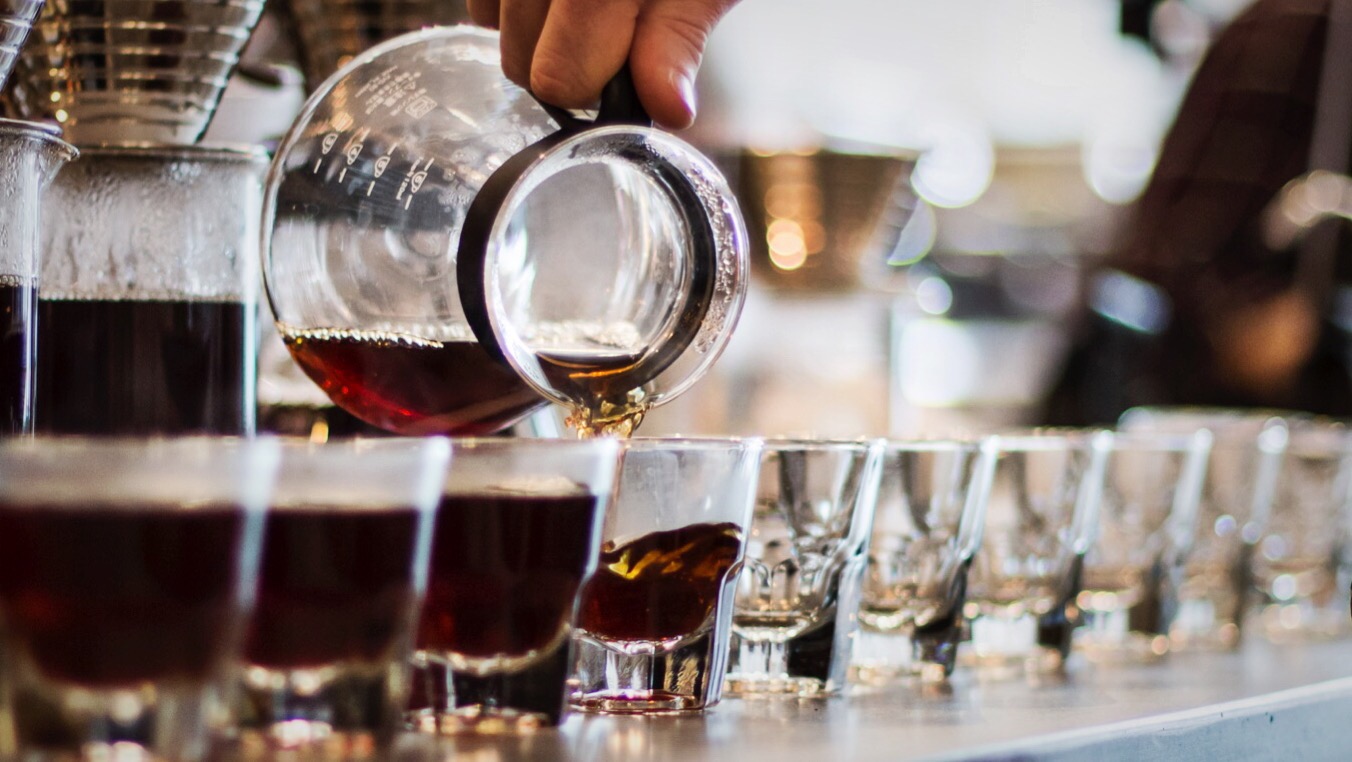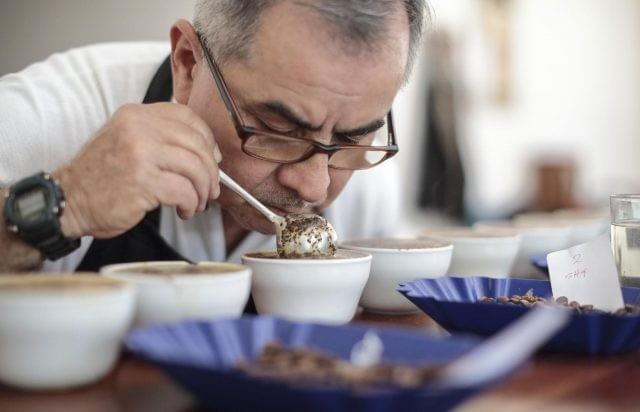Acidity of water and coffee: how to adapt your water to different extraction methods

Professional coffee knowledge exchange More coffee bean information Please pay attention to coffee workshop (Weixin Official Accounts cafe_style)
Dr. MARCO WELLINGER from ZHAW (Zurich Institute of Applied Sciences, Weidensville, Switzerland) explains why alkalinity is more important than pH, and why you should adjust your water formula to the proportion and extraction method of your drink.
Even raindrops that fall on the ground have gases that diffuse into them, most notably CO2. Dissolved CO2 combines with water to form carbonic acid, so that the acidity of rainwater is always around pH 5.5. While this makes any rain acidic, it should not be confused with the phenomenon of acidic rain if the air is contaminated with sulfur and nitrogen oxides at pH 4.5 or lower, posing a threat to the environment and buildings.
Why did I write about rain and pH in the first place? Acid rain proved to be a perfect example of the power of alkalinity compared to pH. American tap water contains an average of 150 ppm CaCO3 per liter, which can neutralize 100 L of acid rain at pH 4.5. [1]Extending the same logic to water and coffee, if the pH is close to neutral (6-8) and the alkalinity is quite high (above 20 ppm CaCO3), then alkalinity affects the final acidity of the drink hundreds of times more than pH.
pH vs. alkalinity
As a user, what does water pH measurement really tell you? The most common explanation-"pH tells you how acidic the water is"-is largely correct, but hides an important fact: measuring pH does not give you the total acidity of the water. It provides only an understanding of acidity relative to neutral pH (see page 21). To illustrate this concept better, I want you to think about the relationship between "temperature" and "heat stored in an object."
For example, in a sunny park, a wooden bench and a stone bench are placed beside the same path. Even after a full day of sun exposure, a wooden bench will not feel too hot, but a stone bench-exposed to the same sun for the same amount of time-will be too hot for the person sitting on it. Measuring the two benches with an infrared thermometer may reveal that they are exactly the same temperature, but the bench stores a lot of heat (mainly because of its mass), which is transferred to you once you decide (perhaps unwisely) to sit on its surface.
Illustration by Ashely Elander Strandquist.
For the same reason, stone benches remain warm for much longer after sunset. In short, a stone bench has a higher heat storage capacity (heat capacity) at a given temperature than a wooden bench. Therefore, the stone bench is more resistant to temperature changes-it has a high inertia.
Let's go back to water-pH is an indicator of the current state of water, but it doesn't contain any information about how easily pH changes when coffee, gas or metal boilers are functioning-like thermometers and benches, pH doesn't tell you all the details. As for benches, it helps to know the heat capacity before deciding where to sit. Basicity is the extra information you need when determining the formulation of water-it outlines the resistance (or lack thereof) of the water to change. Therefore, the ratio of pH to alkalinity is like the ratio of temperature to stored heat.
A low pH means the water is acidic, but it doesn't tell you what acidity it is, or-in other words-acidity has reached pH250 ppm CaCO3) where there is a tendency for "over-extracted flavor", whereas at low total hardness levels (
Important Notice :
前街咖啡 FrontStreet Coffee has moved to new addredd:
FrontStreet Coffee Address: 315,Donghua East Road,GuangZhou
Tel:020 38364473
- Prev

Want to evaluate the quality of coffee objectively and impartially? You need to learn coffee blind test _ what is coffee blind test?
Professional coffee knowledge exchange more coffee bean information Please pay attention to the coffee workshop (Wechat official account cafe_style) during the cup test, you always want to evaluate the coffee quality in an objective and impartial way, but in fact it is very difficult to be objective. Your preset expectations and personal biases will always affect the score of this cup of coffee. To solve this problem, we can only rely on blind test. Blind test is not only to help you but also
- Next

Introduction of Burundian coffee producing areas and Burundian coffee
Burundian coffee is mainly from the famous coffee producing areas such as Kayanza, Ngozi, Muyinga and Kirimiro, although there are other small producing areas, but these regions are the most famous for their coffee. The first Arabica coffee tree in Bloomberg was introduced by the Belgians in the 1930s. Because of this.
Related
- Beginners will see the "Coffee pull flower" guide!
- What is the difference between ice blog purified milk and ordinary milk coffee?
- Why is the Philippines the largest producer of crops in Liberia?
- For coffee extraction, should the fine powder be retained?
- How does extracted espresso fill pressed powder? How much strength does it take to press the powder?
- How to make jasmine cold extract coffee? Is the jasmine + latte good?
- Will this little toy really make the coffee taste better? How does Lily Drip affect coffee extraction?
- Will the action of slapping the filter cup also affect coffee extraction?
- What's the difference between powder-to-water ratio and powder-to-liquid ratio?
- What is the Ethiopian local species? What does it have to do with Heirloom native species?

